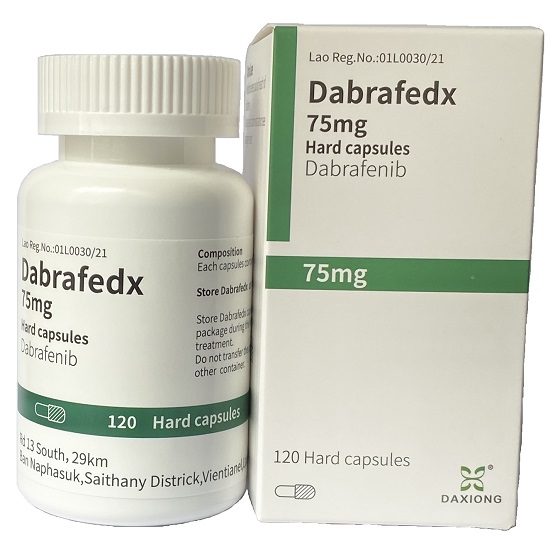The Role and Therapeutic Effects of Tafinlar (Dabrafenib)

The Role and Therapeutic Effects of Tafinlar (Dabrafenib)
Tafinlar (Dabrafenib) is a targeted anticancer drug, primarily used to treat patients with malignant melanoma harboring BRAF V600E or V600K mutations, and also used for patients with BRAF V600E mutations in non-small cell lung cancer. This drug inhibits the abnormal signaling pathways caused by BRAF gene mutations to suppress the growth and division of cancer cells. In clinical trials, Dabrafenib has demonstrated significant efficacy and high safety.
1. Mechanism of Action
Dabrafenib is mainly used for patients with melanoma carrying BRAF V600E or V600K mutations. Mutations in the BRAF gene lead to abnormal intracellular signaling, which in turn drives the rapid growth of tumor cells. Dabrafenib selectively inhibits the activity of these mutated forms of BRAF kinase, thereby slowing or stopping the proliferative behavior of cancer cells and promoting the apoptosis of tumor cells.
2. Clinical Therapeutic Effects
Multiple clinical trials have shown that Dabrafenib has significant effects in treating melanoma. Studies indicate that patients treated with Dabrafenib have higher tumor response rates and extended survival compared to those receiving traditional chemotherapy. Particularly in patients positive for BRAF V600 mutations, Dabrafenib can significantly improve progression-free survival (PFS) and overall survival (OS).
3. Advantages of Combination Therapy
Dabrafenib is often used in combination with another MEK -targeting drug— Trametinib. This combination therapy has been proven in clinical research to enhance efficacy and reduce the development of resistance. By acting on different targets of the MAPK pathway, combination therapy can more comprehensively inhibit tumor growth and reduce the likelihood of recurrence.
4. Adverse Reactions and Management
Despite its significant therapeutic effects, Dabrafenib may also be accompanied by some adverse reactions, such as rash, fever, and joint pain. These side effects are usually controllable, and clinicians will adjust the treatment plan according to the patient's specific situation, providing symptomatic treatment when necessary to ensure the patient obtains the best therapeutic effect under safe conditions.
Q&A Cases
Case 1: What are the common side effects of Dabrafenib?
Q: I'm considering using Dabrafenib for melanoma treatment. What are its common side effects?
A: Common side effects of Dabrafenib include rash, fever, and joint pain. These side effects are usually controllable, and doctors will adjust the treatment plan according to your specific situation to ensure the safety and effectiveness of the treatment. If needed, you can consult DXY customer service.
Case 2: How effective is the combination of Dabrafenib and Trametinib?
Q: How effective is the combination of Dabrafenib and Trametinib for melanoma treatment?
A: The combination therapy of Dabrafenib and Trametinib has shown significant efficacy in clinical research, improving progression-free survival (PFS) and overall survival (OS) while reducing the development of resistance. This combination therapy acts on different targets of the MAPK pathway to more comprehensively inhibit tumor growth.
Conclusion
As an important targeted drug for treating melanoma, Dabrafenib has become a key treatment option in this field due to its specific mechanism of action and significant clinical effects. Ongoing clinical research and continuous pursuit of therapeutic effects suggest that this drug may play a greater role in the future, benefiting more patients.

